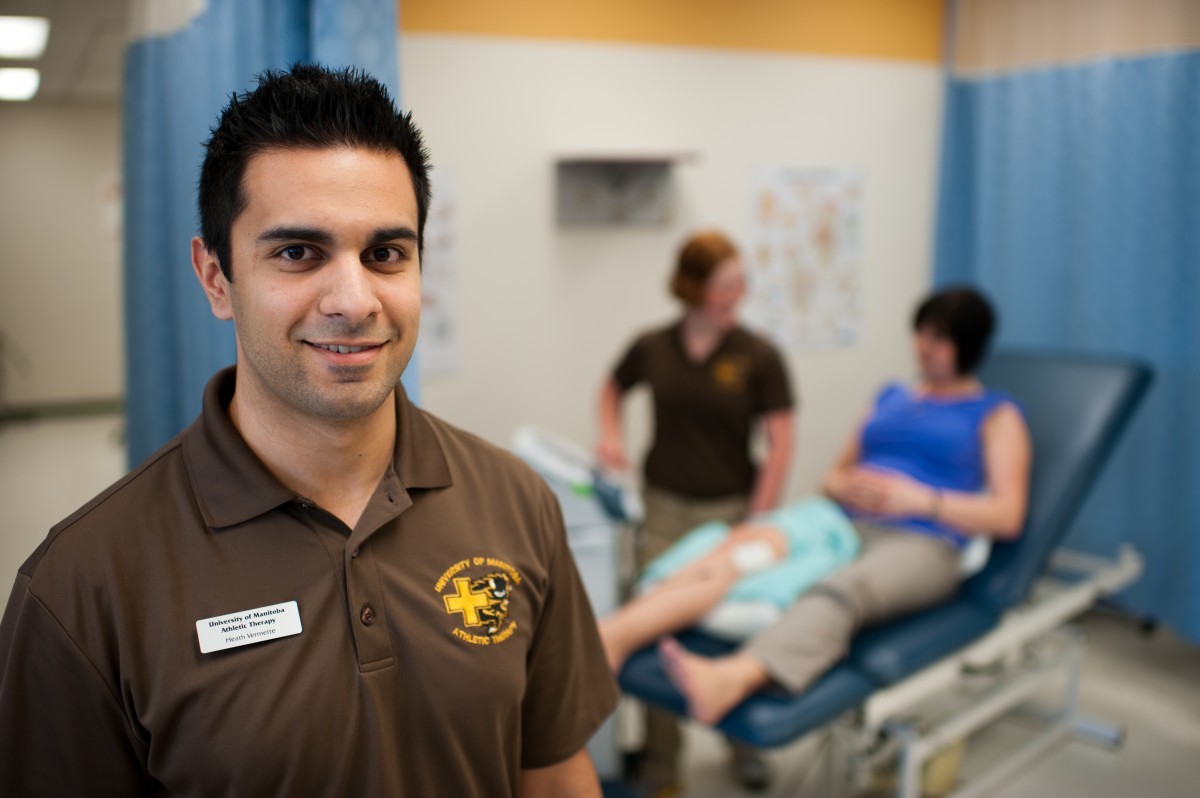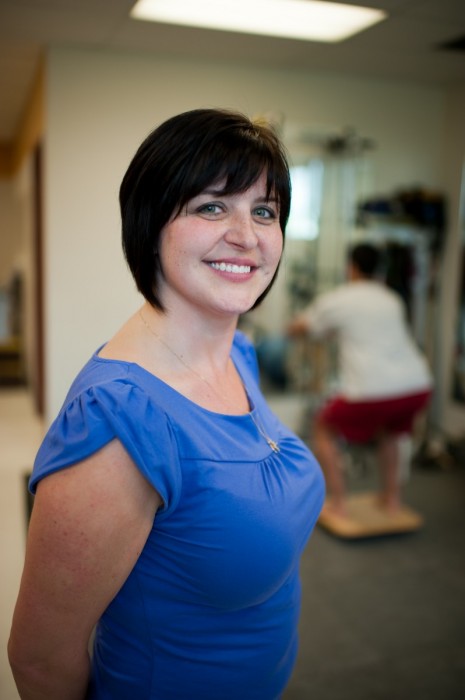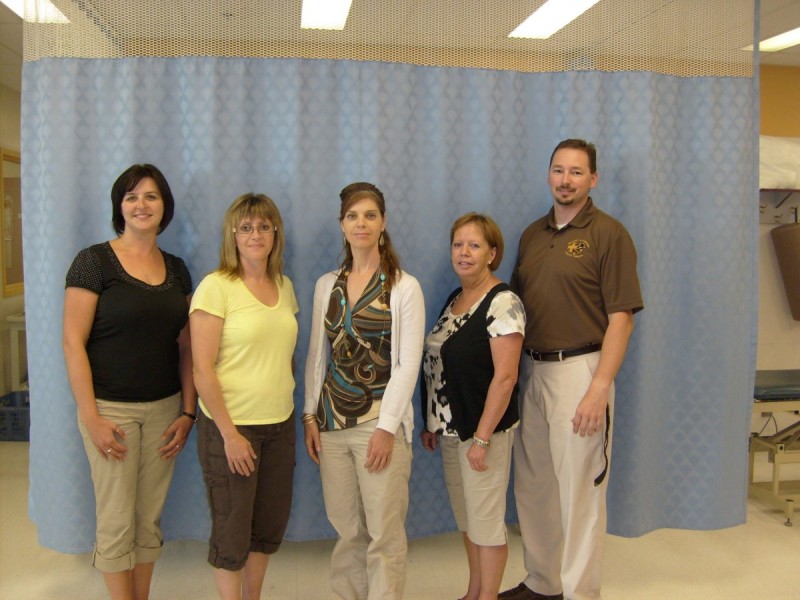
We are all athletes
Ever wonder just what they do over there on the second floor of the Investors Group Athletic Centre marked “Bison Athletic Therapy Centre” (BATC)? Since June is Athletic Therapy Month, it may be a good time to find out.
Before visiting the centre for whiplash after my car accident, I wondered too. After several weeks of treatment, including massage therapy, stretches, strengthening exercises and education about neck and muscle injuries, it became clear to me how athletic therapy helps not only elite athletes but also regular people like me after an injury.
BATC director Tracy Nyczai says that it’s not uncommon for the average person to be unaware of the services provided by the BATC– or even the existence of trained athletic therapists.
While we usually think of sports when we talk about athletic activity, most Canadians engage in some form of physical activity every day, she adds.
Whether it’s lifting an infant into a highchair, running for the bus, or bending to reach a fallen sock behind the dryer, we move and exert our bodies constantly. And sometimes we feel the pain from those movements.
Now that summer has arrived, and with it welcome physical activity, it comes with increased possibility of muscle strain or injury. That’s where athletic therapy can help.
Whether it’s lifting an infant into a highchair, running for the bus, or bending to reach a fallen sock behind the dryer, we move and exert our bodies constantly. And sometimes we feel the pain from those movements.
Athletic therapy is also sometimes confused with physiotherapy.
The major difference between two, says Nyczai, is that athletic therapists specialize in orthopaedics, the branch of medicine that deals with the prevention or correction of injuries or disorders of the skeletal system and associated muscles, joints and ligaments.
They are trained in the area of assessment and treatment of such injuries or conditions and have experience with a wide variety of manual therapy technique for these kinds of injuries.
As the name suggests, athletic therapists often work with athletes in the prevention and treatment of injuries. Their training is augmented with injury prevention, supporting taping and emergency care for on field work with teams. Their formal training also includes exercise physiology to retrain athletes after an injury.
Nyczai says that celebrating National Athletic Therapy Month is a great way for the centre to “create awareness about athletic therapy as a choice for rehabilitation. It helps individuals safely return to work or play after injury or pain.”
The Bison Athletic Therapy Centre services our intercollegiate athletes, as well as the students, faculty and staff at the university, and also welcomes and provides services to the community and general public.
The Bison Athletic Therapy Centre is located on the Fort Garry Campus, 2nd floor of Investors Group Athletic Centre, and services the injury rehabilitation needs of faculty, staff, students, and Bison athletes. The centre is open year-round from Monday to Friday from 7:30 a.m. until 5:00 p.m. Treatments are covered under the University Health Benefits plan and the Bison Athletic Therapy Centre also accepts MPIC and WCB injuries.
The idea behind National Athletic Therapy Month this June: an annual reminder that everyone can benefit from the expertise of Canada’s Certified Athletic Therapists. By declaring, “We are all athletes”, the Canadian Athletic Therapists Association hopes to educate Canadians who have sustained an injury to their muscles, bones, or joints that a Certified Athletic Therapist can help get them back to work and play.









